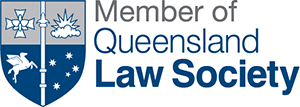Speak to a Lawyer
At Cairns Employment and Workplace Lawyers you will always speak to a Lawyer.
Fill out the form below and we will call you back to organise a meeting with your own Lawyer.


As of 1 September 2024, the Queensland Parliament has enacted the Work Health and Safety (Sexual Harassment) Amendment Regulation 2024. This pivotal regulation necessitates that all employers and business proprietors actively manage the risks associated with sexual harassment and gender or sex-based harassment in the workplace.
The regulation underscores the classification of sexual harassment as a critical Work Health and Safety entanglement and mandates that a prevention plan be meticulously put in place by no later than 1 March 2025.
Consequences of Non-Compliance
Non-compliant Queensland enterprises could incur considerable compensatory damages and financial sanctions if an employee lodges a sexual harassment complaint.
Crafting an Effective Prevention Plan
A credible prevention plan should be collaboratively developed with the involvement of designated safety personnel or “officers” with due diligence responsibilities under the Work Health and Safety Act 2011 (Qld).
Considerations for Implementing Control Measures:
- Worker Characteristics: Factors such as age, gender, sex, sexual orientation, and disability should be taken into account.
- Workplace Attributes: Pay attention to any environment, culture, or work system that may foster unacceptable behaviour, the diversity within decision-making roles, and other elements influencing conduct towards workers.
The regulation’s Explanatory Note particularly highlights workers with protected characteristics (under the Anti-Discrimination Act 1991 (Qld)), those with limited work experience, LGBTQIA+ individuals, Aboriginal or Torres Strait Islander workers, individuals with disabilities, and migrant workers as being especially susceptible to sexual harassment.
Essential Components of a Prevention Plan
At a minimum, a robust prevention plan must:
- Be documented in writing.
- Clearly articulate each identified risk.
- Outline the control measures designated to manage each risk.
- Consider and document individual characteristics (age, gender, disability) and workplace attributes used in determining control measures.
- Detail the consultation process undertaken.
- Establish a clear procedure for handling complaints.
- Be accessible and comprehensible to all employees.
Ensuring Awareness and Compliance
Employers must take reasonable steps to ensure that all employees are informed about the prevention plan and know how to access it. Additionally, the plan should be reviewed promptly if:
- A sexual harassment report is submitted.
- A health and safety committee or a worker’s representative calls for a review.
- Otherwise, conduct a review every three years.
Failing to implement or revise a plan can result in fines of 60 penalty units (currently $9,679) per infringement. The Work Health and Safety regulator holds the authority to issue on-the-spot fines, improvement, and prohibition notices for non-compliance.
For expert assistance in formulating a sexual harassment prevention plan, contact Cairns Employment Lawyers today.